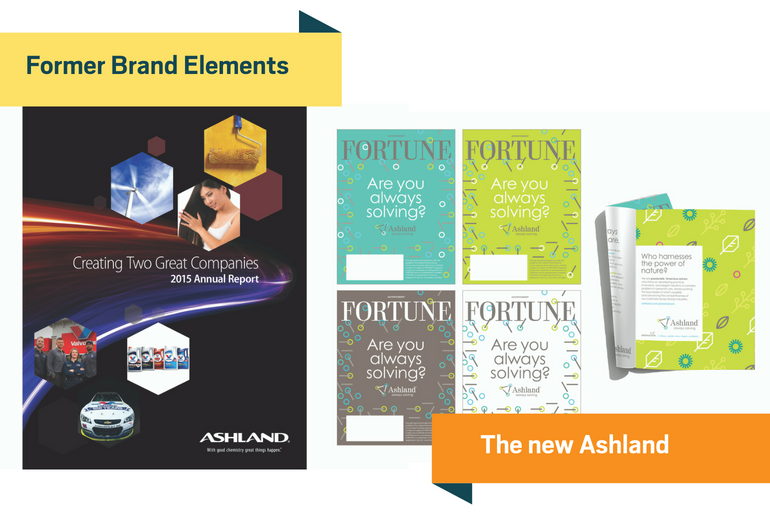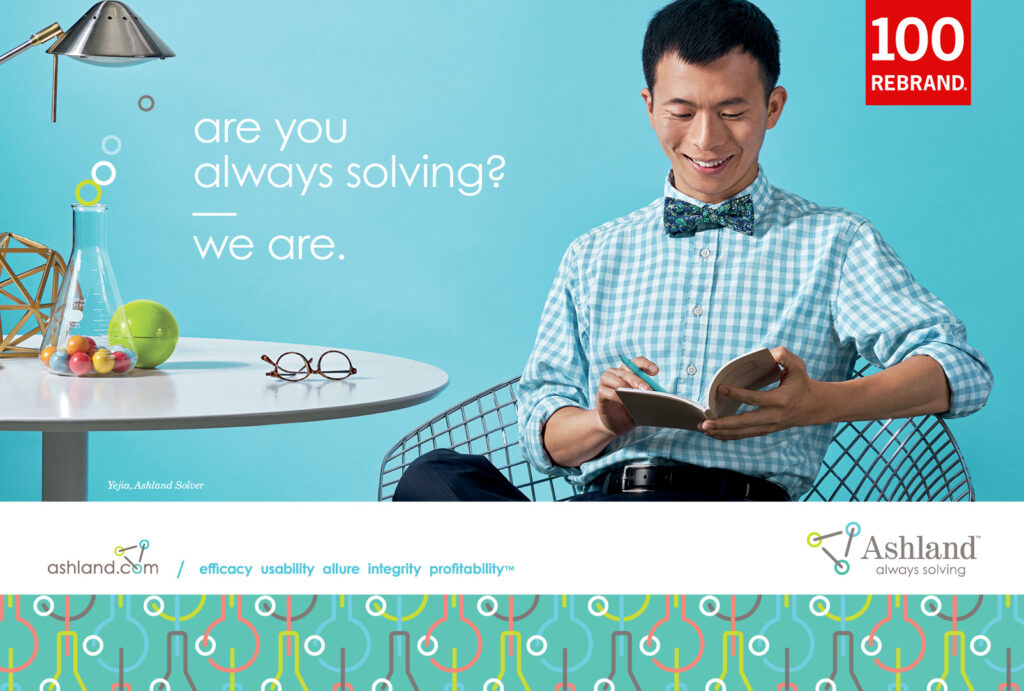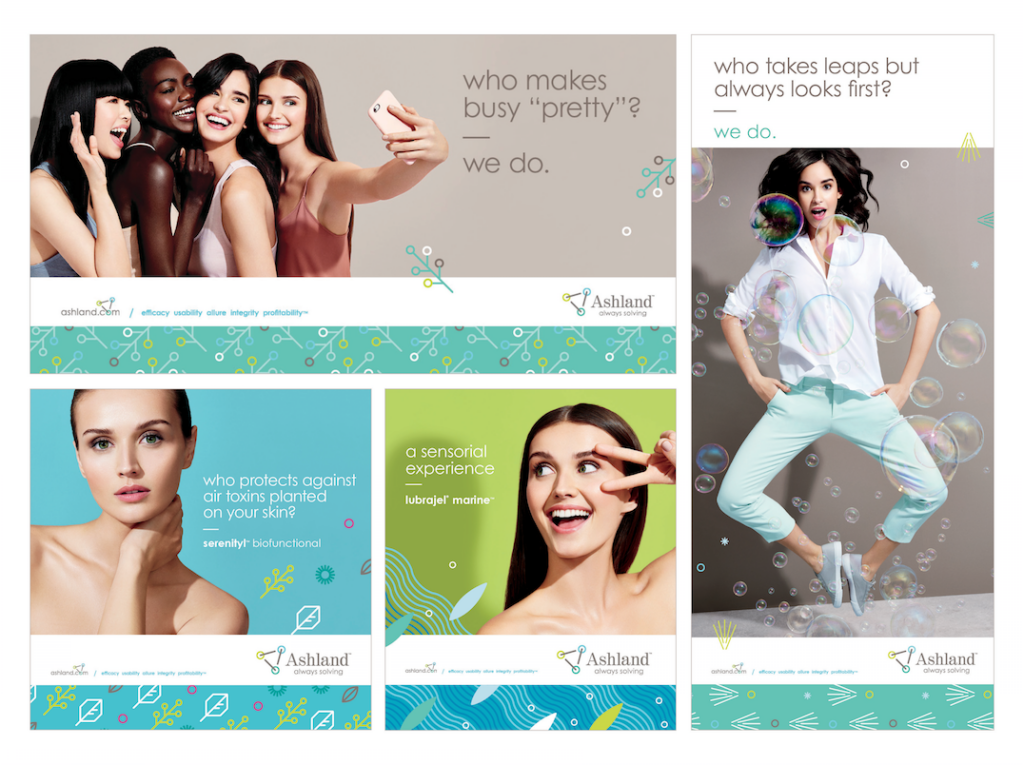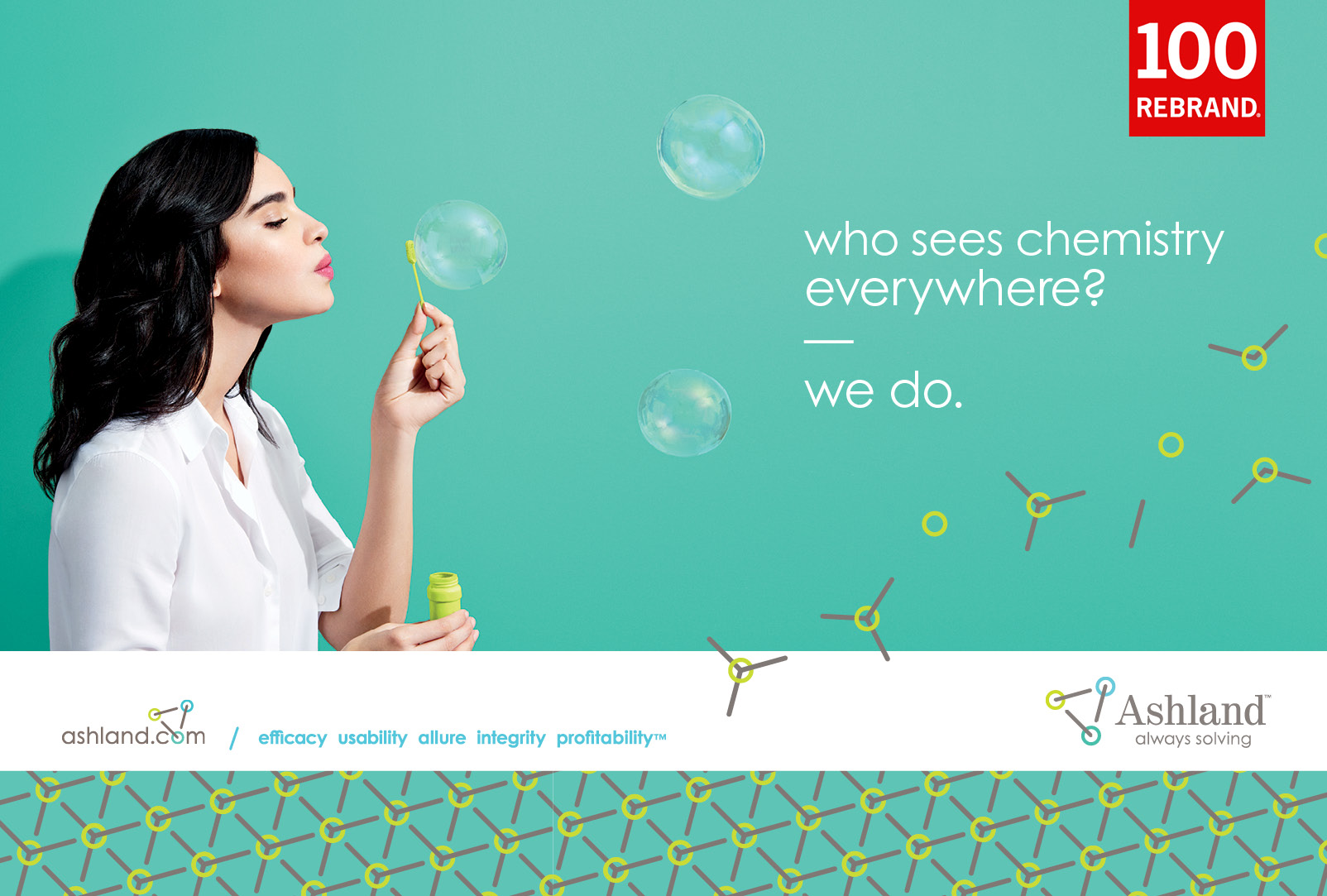What is your compelling truth?
That’s what Carolmarie Brown needed to find out when she walked in the doors of Ashland, the global specialty chemical company. As the director of global marketing, brand and business communications, Carolmarie understood that the answer to that question would help solve a big problem that plagued Ashland for decades: How do you tell the world what your company does when the people who work there aren’t entirely sure?
Ashland had what most businesses would regard as a “good problem.” Over the past one hundred years, the company grew from a small refinery into a global specialty chemical giant. But with that amazing growth came incredible complexity in products, services, markets, and leadership—which ultimately resulted in tremendous amounts of confusion. The company had much more value than any of its stakeholders or even its own employees understood. “Between acquisitions and divestitures, the internal teams tried to do the best job possible integrating everything, but people were still pretty stove-piped,” Carolmarie recalls. “And to the external world, there was a lot of confusion and a lot of fragmentation. People knew Ashland as ‘the parent company’ or they knew ‘the company that was acquired,’ but they didn’t really understand—nor did the internal employees—who this company really was.”
So drawing on her previous 25 years of experience at DuPont, where she worked in a variety of roles including communications, marketing, sales, and new business and product development, Carolmarie began a process to end the fragmentation problem.
Starting with an intense period of quantitative and qualitative research, Carolmarie spearheaded a massive rebranding effort that resulted in a new corporate brand strategy, new positioning and a new creative identity for Ashland. The moves she made were based on data, and, she recalls, trusting her gut. “When you’re rebranding, you have to remember that it’s not just about the head, but also about the heart.” Carolmarie and her team’s work paid off, earning a REBRAND 100 Award of Distinction in 2018, and an Ashland Chairman’s Award in 2017.

Carolmarie recently spoke to us about the massive undertaking of unifying the look, the voice and the stated mission of a wildly diverse company like Ashland, which has been in constant transformation (or as she puts it, “a company that does not sit still.”) Here’s how she went about putting all of those moving parts together, and her takeaways for other science marketing professionals looking to successfully transform a brand from the inside out.
Rebrand with a purpose
A rebrand is more than just a refresh of your organization’s color palette and logo – it’s a reexamination of its reason for being in the eyes of your customers, prospect and industry, and if done properly, it can drive real value for your company. In other words, it’s not something to be done on a whim. If you’re going to take on this sort of strategic undertaking, make sure it’s for good reason and has the support of your executive team. From Carolmarie:
“Within a year and a half of my start, our chairman and CEO Bill Wulfsohn announced that we were going to separate into two great companies: Ashland and Valvoline. And that was really the right time to begin thinking about a rebrand and aligning the Ashland brand with who we are and what we were becoming. What’s in the company’s DNA? So we conducted not only qualitative but also quantitative market research. I brought in a brand expert that I worked with in the past at DuPont and we followed what I would call a proven process to make sure that we measured what drives customer choice and then optimized the way we go to market.”
Understand the main issues – and don’t be afraid to be brutally honest
A strategic rebrand isn’t just about what you think the brand should look, feel and sound like – instead, treat it as a strategic opportunity to clear up confusion that exists around your brand in the market to increase value. As a marketing leader you may know what makes your business different, but would your workforce and customers beg to differ?
“To start, you really need to develop an honest understanding of where you are today. Take a realistic assessment from your internal and external audience. We found that employees couldn’t really articulate why a customer or prospect would select Ashland versus our competitors, and they would tend to say things like, ‘Oh, Ashland bought us but we’re really Hercules.’ And then when you spoke with external stakeholders, whether it was doctors or whether it was media, they would write and talk about parts of Ashland rather than the company as a whole. It created a fragmented kind of crazy situation. I knew we had to clarify where we chose to compete, what we offered, and explain why Ashland is the best choice.”
Find the compelling truth
The best brands are built around fundamental truths that a company can stand behind and prove. It’s not about clever copy that stretches the truth; it’s about telling and demonstrating the truth well.
“In addition to the market research, we took a deep dive into strategic documents that the company had from prior years. We asked ourselves, ‘Who is this company and what can we do like no other company? What’s its compelling truth?’ And we found out that no matter what area of the company you work in, no matter what customers you serve, the same answer came through loud and clear: People who work at Ashland are passionate, they’re tenacious and they’re solvers. They care deeply about solving customers’ problems.”
Define the goal of your rebrand
Knowing the shift you want to drive in your brand’s perception in the marketplace is a good starting point, but how do you take that compelling truth to market?
“After you have the work, now you need to find out where you really want to play. For Ashland, we said we’re going to be the premier specialty chemical company and really define what a specialty chemical company means to us. We didn’t want to go after everything under that particular market segment. We said let’s define our arena, and then in addition to the products that we make, let’s talk about what we really do (versus what we make); about how we solve our customers’ problems.”
Build the pillars
Successful brands bridge their compelling truth to contexts that their audiences can relate to. In other words, a brand promise is what you stand for, and the role you play in the lives and work of your customers and prospects.
“Once we arrived on the notion of being solvers, we needed to communicate how we solve. And so we defined what we call the Ashland Five Effects: we improve the efficacy, usability, allure, integrity, and profitability of our customer’s products and applications.
How does ‘allure’ apply to one of our customers that makes personal care products and, let’s say, to another customer that makes composite truck beds? For the truck beds, if you’ve got a construction worker throwing things in the back like nails, the color goes all the way through the material so it maintains the allure of that vehicle. And in personal care, if your hair has been treated with certain conditioners or ingredients that make it softer and stronger, again, you maintain its allure. These five common effects span across our entire enterprise.”
Shape the creative
Once you’ve studied your marketplace and have developed strategic positioning, it’s finally time to get creative, in the traditional sense of the word, too.
“Our creative is driven off our strategy to solve. A lot of people don’t realize that. Because we are scientists, chemists and engineers, the symbol in our signature are molecules that are not attached to each other and are in motion because it suggests our ability to rethink chemistry. And they are arranged in the shape of a triangle, which actually comes from the mathematical symbol for ‘therefore.’ You’re asking a question, you need a solution, therefore Ashland. And to get across the idea that we’re always solving, that we’re always in motion, we tipped the triangle on its side. The harmonious blue, green, teal and even the warm gray color tone of the symbol connote earth, sky, and water, which gives a nod to a more sustainable future. That is a very important message that is in step with the philosophy of Ashland and many of our biggest clients.”

 A winning content strategy
A winning content strategy
In today’s multichannel and fragmented media landscape, considering how your brand will translate across formats and channels is essential to bring your brand to life and to market.

“As we push ahead, I see us continuing to reinforce our message and get out there with as much content as we can through social media. Storytelling through video is becoming increasingly important. People don’t necessarily always want to just read content anymore, and it allows you to tell a quick, compelling story that gives prospects just enough information to want to discover more.
Content marketing is certainly huge, as is thought leadership. We provide thought leadership not just from our incredible executives, but also from the people that are actually in the lab working. Again, we want to reinforce that Ashland is made of people who are passionate about using their expertise to solve your problems and move you forward.”
Stay on the path
Ultimately, branding is about finding your story and sticking to it. Done properly, your new brand guidelines and contours should simplify decision-making. You’ve done the hard work upfront, so decisions should get easier downstream.
“If you’ve done your homework and you’ve got the research, you really need to stay on that path to achieve your goals. You don’t build a brand overnight and you really have to adhere to the brand standards. We need to ensure that our brand voice and visual identity is clear, strong, and persuasive and to raise the standard for the consistency and effectiveness of our communications. We have a brand standards book that is well over 200 pages long, and it is packed with very rigid guidelines about how to use the signature, what colors to use, how much white space surrounds it, etc. We make sure every aspect of our imagery—every single prop that is used in our photoshoots—is true to our brand identity.”
Be patient
Rome wasn’t built in a day. And that will also be the case for your new brand.
“My biggest piece of advice for those spearheading a rebrand is this: Don’t get discouraged. Whether you’re in a position like mine or you’re a junior marketer, you’ll be talking to brilliant executives and engineers and scientists from Yale and Harvard and places like that, but who don’t necessarily understand that there is a strategic process for rebranding. You might talk to them about finding the company’s compelling truth and they look at you like you’ve got three heads! Just remember that you’re bringing folks along with you, so you have to take baby steps. Educate them about the path, that your research shows is the right way to get a successful outcome. Learn to be patient, learn to read your audience and you’ll be able to bring them along with you.”
Hear more of these insights from Carolmarie on how to tackle a rebrand at our free science marketing event, taking place August 22nd in Boston. Along with Carolmarie, science marketing experts from Merck KGaA, Luminex Corporation, InnovaMap, The Market Element, HDMZ, our own C&EN editorial director, and more will address how to prepare for the new scientific buyer. The event is free to attend, but space is filling.
See the full agenda and RSVP here to secure your spot.






















